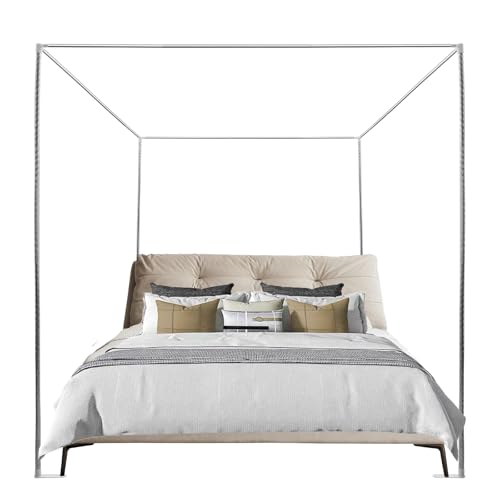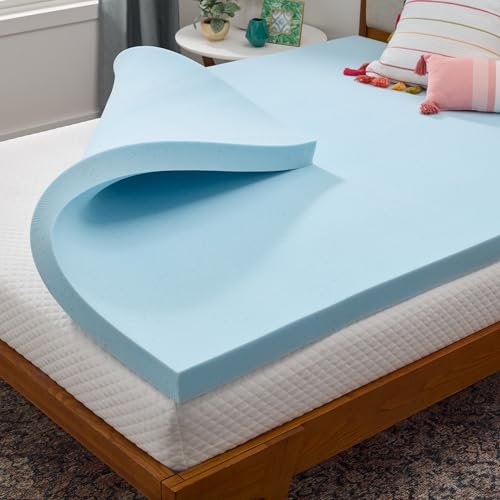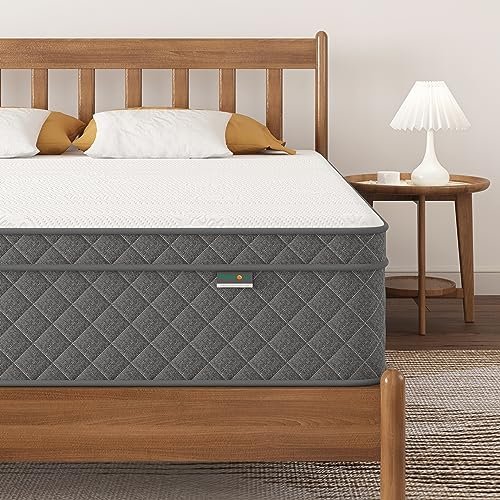
How to Make a Canopy Bed Frame: Your Ultimate DIY Guide to a Dreamy Bedroom Retreat
Dreaming of a romantic, elegant, or simply cozy bedroom sanctuary? A canopy bed is the ultimate centerpiece, transforming any sleeping space into a luxurious haven. While buying one can be an investment, building your own DIY canopy bed frame is a surprisingly achievable and incredibly rewarding project! Not only will you save money, but you’ll also create a custom piece perfectly tailored to your style and needs.
This detailed guide will walk you through every step of making your own canopy bed frame, from planning to the final finish. Get ready to unleash your inner carpenter and create the bed of your dreams!
Why Build Your Own Canopy Bed Frame?
Before we dive into the sawdust, let’s look at why building your own canopy bed is a fantastic idea:
- Customization: You get to choose the exact dimensions, material, style, and finish to match your existing decor perfectly.
- Cost Savings: DIY projects almost always cost less than purchasing a ready-made item, especially for furniture of this scale.
- Quality Control: You control the materials and construction, ensuring a sturdy, durable, and high-quality bed frame that will last for years.
- Personal Satisfaction: There’s immense pride in sleeping in a bed you built with your own hands!
Planning Your Dream Canopy Bed
Good planning is the foundation of a successful DIY project. Don’t skip this crucial step!
1. Design & Style Considerations
Think about the overall aesthetic you want to achieve:
- Modern & Minimalist: Clean lines, simple posts, perhaps a sleek dark stain or crisp white paint.
- Rustic Farmhouse: Distressed wood, chunky posts, natural wood tones.
- Boho Chic: Lighter woods, perhaps with intricate carved details or fabric draping.
- Traditional Elegance: Richer wood tones, possibly with decorative finials on top.
Sketch out your design! This helps visualize the final product and identify any potential challenges.
2. Material Selection
For a sturdy DIY canopy bed frame, wood is the most common and accessible material.
- Lumber Type:
- Pine: Affordable, easy to work with, but softer and prone to dings. Great for painting or staining darker.
- Poplar: A step up from pine, harder, takes paint well.
- Oak, Maple, Cherry: More expensive, harder, beautiful grain. Best if you plan to stain and showcase the natural wood.
- Dimensions:
- For the main frame (side rails, end rails): Consider using 2×6 or 2×8 lumber for robustness.
- For the vertical posts: 4×4 lumber is ideal for stability and a substantial look. You could also use laminated 2x4s for a similar effect if 4x4s are hard to find.
- For the top canopy frame: 2×4 or 2×2 lumber is generally sufficient, as it primarily supports fabric or decorative elements.
- For slat supports: 2×2 or 1×4 lumber.
- For bed slats: 1×4 or 1×6 lumber.
- Hardware: You’ll need wood screws, lag bolts, carriage bolts, washers, and nuts for strong, secure joints. Wood glue is also essential.
3. Taking Precise Measurements
This is arguably the most critical step.
- Mattress Dimensions: Measure your specific mattress (length, width, and height), not just relying on “Queen” or “King” labels, as sizes can vary slightly.
- Frame Sizing: Your bed frame needs to be slightly larger than your mattress to accommodate it comfortably. Aim for about 1/2 to 1 inch extra on both the length and width inside the frame.
- Height: Decide on the desired height of your bed base (how high off the floor your mattress will sit) and the overall height of your canopy. Consider ceiling height if your room is smaller.
4. Gathering Your Tools & Materials
Here’s a general list of what you’ll need. Gather everything before you start!
Tools:
* Measuring Tape & Pencil
* Circular Saw or Miter Saw: For precise cuts.
* Drill & Drill Bits: For pilot holes and driving screws.
* Level: Crucial for ensuring everything is straight.
* Clamps: Essential for holding pieces securely while joining.
* Wood Chisel & Mallet (optional): For more advanced joinery.
* Sander & Sandpaper: For a smooth finish.
* Safety Glasses & Hearing Protection: Always!
* Work Gloves
Materials (General):
* Lumber: As determined by your design and measurements.
* Wood Screws: Various lengths (e.g., 2.5-inch, 3-inch, 4-inch).
* Lag Bolts or Carriage Bolts: With washers and nuts for securing posts to the frame (e.g., 3/8-inch or 1/2-inch diameter, 4-6 inches long).
* Wood Glue: High-quality wood adhesive.
* Wood Filler: For any gaps or imperfections.
* Stain, Paint, or Sealer: For your desired finish.
Step-by-Step Guide: Building Your Canopy Bed Frame
Let’s get building! Remember to work safely and double-check all measurements before cutting.
Step 1: Measure and Cut Your Lumber
Based on your design and mattress measurements, cut all your lumber to size.
- Side Rails: Two pieces.
- End Rails (Head & Foot): Two pieces.
- Vertical Posts: Four pieces (these will be the height of your canopy).
- Top Canopy Rails: Two side pieces, two end pieces.
- Slat Supports: Two long pieces (to run along the inside of the side rails).
- Slats: Multiple pieces (to span the width of the frame).
- Optional: Center Support Beam: For larger beds (Queen, King).
Pro Tip: Label each cut piece immediately with what it is (e.g., “Side Rail L,” “Foot End R”) to avoid confusion.
Step 2: Assemble the Main Bed Frame (Bottom Section)
This forms the base where your mattress will rest.
- Join the Side and End Rails: The strongest joints are often created using pocket hole screws, lap joints, or mortise and tenon joints, but for a simpler approach, you can butt joint the end rails between the side rails.
- Apply wood glue to all mating surfaces before securing with screws.
- Pre-drill pilot holes for all screws to prevent wood splitting.
- Drive screws to create a secure, rectangular frame. Use clamps to hold the pieces tightly together while screwing.
- Ensure the frame is perfectly square by measuring diagonally from corner to corner; the measurements should be identical.
Step 3: Attach the Vertical Posts
These are the pillars that define your canopy!
- Position the Posts: Stand each 4×4 post upright in each corner, flush with the outside edges of your assembled bed frame.
- Secure with Bolts: This is where strength is paramount.
- Drill two through-holes in each side rail and end rail where they meet the post. Make sure these holes are straight and go through both the rail and the post.
- Insert carriage bolts or lag bolts (with washers and nuts) through the holes. Tighten them securely.
- Use wood glue between the post and the frame for extra adhesion.
- Repeat for all four posts. This creates an incredibly strong connection.
Step 4: Construct the Top Canopy Frame
This frame sits atop your vertical posts.
- Assemble the Top Rails: Similar to Step 2, create a rectangle using your top canopy side and end rails. This frame should be the exact same outer dimensions as your main bed frame.
- Use wood glue and screws. Pre-drill all holes.
- Ensure it’s perfectly square.
Step 5: Secure the Top Frame to the Posts
Carefully lift and position the assembled top canopy frame onto the top of your four vertical posts.
- Align Precisely: Make sure the edges of the top frame are perfectly flush with the outer edges of the vertical posts. This is crucial for a clean look and structural integrity.
- Secure with Screws/Bolts:
- You can use long, heavy-duty wood screws driven down through the top frame into the posts (at least two per post).
- For even greater strength, consider using corner braces or metal brackets on the inside corners of the top frame, screwing them into both the top frame and the vertical posts.
- Apply wood glue before screwing for maximum hold.
Step 6: Add Slat Supports and Slats
This is what will hold your mattress up!
- Attach Slat Supports:
- Measure and mark a line about 1.5 to 2 inches below the top edge of your side rails on the inside of the main bed frame. This creates a lip for your slats to rest on.
- Secure your 2×2 or 1×4 slat support pieces along this line on both inner side rails, using wood glue and screws every 12-18 inches. Pre-drill to avoid splitting.
- Install Center Support (for larger beds): For Queen and King-sized beds, a center support beam running from the head to the foot end rail is highly recommended to prevent mattress sag.
- You’ll need to create a notch or add small support blocks to the inside of your head and foot rails for this beam to rest on.
- Attach a vertical support leg in the middle of this beam down to the floor for extra stability.
- Place the Slats:
- Cut your 1×4 or 1×6 slat pieces to the correct length to span the width of your bed frame (resting on the slat supports).
- Space them evenly, typically 2-3 inches apart.
- Secure each slat to the slat supports with a screw on each end. This prevents them from shifting.
Step 7: Finish Your Masterpiece
This is where your bed really comes to life!
- Sanding: Sand everything thoroughly! Start with a coarser grit (e.g., 80 or 100) to remove imperfections, then move to medium (150) and fine (220) for a smooth, touchable finish. Pay extra attention to edges and corners.
- Clean: Wipe down all surfaces with a tack cloth or damp cloth to remove all dust.
- Apply Finish:
- Stain: Apply wood stain according to product instructions. Wipe off excess. You might need multiple coats for deeper color.
- Paint: Apply primer, then two or more thin coats of your chosen paint, sanding lightly between coats for a smooth finish.
- Seal: Once the stain or paint is dry, apply a protective topcoat like polyurethane, lacquer, or wax. This protects the wood and enhances its durability.
Essential Tips for Success
- Measure Thrice, Cut Once: This old adage is true! Mistakes here are costly.
- Safety First: Always wear safety glasses and hearing protection. Use gloves when handling rough lumber.
- Get Help: This is a large project. Enlist a friend or family member to help with lifting, holding, and assembling large pieces.
- Pre-Drill, Pre-Drill, Pre-Drill: This prevents wood splitting, especially near edges or when working with harder woods.
- Test Fit: Before final assembly and gluing, dry fit pieces together to ensure they align correctly.
- Take Your Time: Don’t rush any step, especially the finishing. Patience leads to professional results.
Common Mistakes to Avoid
- Incorrect Measurements: Leads to a frame that’s too small for your mattress or doesn’t fit together properly.
- Ignoring Wood Grain: Cutting against the grain can cause splitting. Always consider the grain direction for both strength and appearance.
- Skipping Pre-Drilling: Leads to cracked wood and compromised structural integrity.
- Rushing the Finish: Uneven sanding, sloppy stain application, or insufficient drying time can ruin the look of your hard work.
- Poor Joint Construction: Weak joints will lead to a wobbly, unstable bed. Invest time in strong joinery and always use wood glue.
- Not Accounting for Mattress Size: Remember to leave a little extra space (1/2 to 1 inch) around your mattress inside the frame.
Your Dream Bed Awaits!
Congratulations! You’ve successfully learned how to make a canopy bed frame. With careful planning, precise execution, and a bit of elbow grease, you’ll soon be enjoying your very own custom-built canopy bed. Drape it with sheer fabric for a romantic feel, string fairy lights for a magical glow, or leave it bare for a modern, architectural statement.
Enjoy your beautiful, custom-made sanctuary! Sweet dreams are guaranteed in a bed you built yourself.
Frequently Asked Questions(FAQ)
Q. What materials are commonly used for a DIY canopy bed frame?
A. Wood, such as pine, oak, or poplar, is the most popular choice due to its versatility, affordability, and ease of working. Metal pipes like black iron or copper are excellent for a more industrial or modern aesthetic. For a budget-friendly or temporary solution, PVC pipe can also be utilized.
Q. Is building a canopy bed frame a difficult DIY project for beginners?
A. The difficulty varies with the design’s complexity. A basic four-poster frame that attaches to an existing bed can be manageable for a beginner with fundamental carpentry skills and tools. More elaborate designs involving complex joinery or custom sizing might require intermediate to advanced DIY experience. Starting with a detailed plan is crucial.
Q. What essential tools will I need to construct a wooden canopy bed frame?
A. For a wooden frame, you’ll typically need a saw (a miter saw or circular saw for precision cuts), a drill/driver, measuring tape, a level, a sander for smooth finishes, wood glue, and clamps. If working with metal pipes, you would need pipe cutters, wrenches, and potentially a pipe threader.
Q. How do I secure the canopy frame to ensure stability and safety?
A. Stability can be achieved in several ways. A full, freestanding frame relies on its inherent design and weight. For frames that attach to an existing bed, use strong bolts to secure the vertical posts to the bed frame’s corners. Wall-mounted canopy frames require robust anchors drilled into wall studs. Cross-bracing at the top or bottom of the frame also significantly enhances rigidity.
Q. Can I convert an existing regular bed frame into a canopy bed?
A. Yes, many DIY canopy projects focus on adding vertical posts and a top frame to an existing bed. It’s important to ensure your current bed frame is sturdy enough to support the additional weight and that you have secure, accessible attachment points at the corners. This often involves drilling into the existing frame or using custom brackets.
Q. What are the common dimensions I should consider when planning my canopy frame?
A. The most critical dimensions are the exact length and width of your mattress or existing bed frame to ensure the canopy fits perfectly overhead. The height is also vital; typically, aiming for a total height of at least 7 to 8 feet from the floor to the top of the canopy provides ample head clearance and an airy feel, but always consider your room’s ceiling height.
Q. How much does it typically cost to build a DIY canopy bed frame?
A. The cost can vary widely based on materials and design complexity. A simple wooden frame might cost between $100-$300 for materials, while a metal pipe frame could range from $200-$500 or more, especially for specialized fittings. PVC is usually the most budget-friendly, often under $100. These estimates generally do not include the cost of tools you may need to purchase.
Q. What kind of fabric or drapery is best suited for a canopy bed?
A. Lightweight, airy fabrics such as sheer voile, organza, linen, or cotton are popular choices for creating a romantic, ethereal, or breezy look. For more privacy, warmth, or light-blocking capabilities, heavier fabrics like velvet or lined curtains can be used. The best choice depends on your desired aesthetic, the amount of light control needed, and your room’s climate.
Q. What safety precautions should I keep in mind when building and using a canopy bed?
A. Always ensure all joints are securely fastened with appropriate hardware and, if applicable, wood glue. Regularly check for any wobbling and reinforce as needed. Sand all wooden surfaces thoroughly to prevent splinters. If hanging fabric, ensure it is kept away from any light fixtures or heat sources to prevent fire hazards and allow for adequate airflow. Periodically inspect the entire frame for any loose connections or wear.
Related Articles
7 Top Full Size Bed Frames: What is the Dimensions of a Full Size Bed Frame and More!
Getting a good night’s sleep often starts with the right bed, and for many, a full-size bed is the perfect sweet spot between a twin and a queen…
How Much Is a King Size Sleep Number Smart Bed
How Much Is a King Size Sleep Number Smart Bed? Your Guide to Understanding the Investment Recommended Product: Select Comfort Air Bed Chamber for Sle…
How Much Does a Sleep Number 360 Smart Bed Cost
How Much Does a Sleep Number 360 Smart Bed Cost? Recommended Product: Sven & Son Classic Adjustable Bed Base — head and foot lift, massage, under-…



